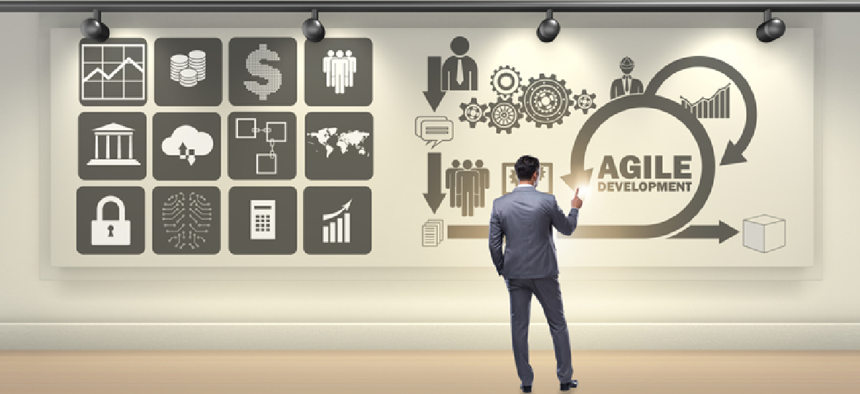Bringing agile to the front line of project and portfolio management


Connecting state and local government leaders
Agile allows agencies to manage process variations that are compliant with enterprise rules.
Much like private companies, government agencies are increasingly seeing the benefits of going agile. With siloed legacy applications and hardware being used well beyond their suggested retirement age, governments are limited by systems that impose unnecessary cost and risk. With a greater emphasis on modernization -- especially following the signing of the Modernizing Government Technology Act -- and a widening pool of tools to choose from, technology leaders who had been piecing together solutions just to do basic tasks are receiving the help they need to upgrade essential systems.
Hand in hand with modernization, government tech leaders can also future-proof their solutions, ensuring they’re powerful enough to support the needs of multiple, diverse agency departments. Leaders want solutions adaptable enough to update and modify without time-consuming customization and coding. Support for agile principles is an important component of this versatility, which allows teams to move from 12- to 18-month implementation projects to much faster delivery. Technology is evolving so quickly that government IT departments must upgrade systems in a business-driven, agile and iterative manner. Government leaders expect enterprise systems that can respond to change immediately and stay useful in the future, no matter what changes the agency encounters.
A reorientation toward agile methodologies -- particularly when it comes to project and portfolio management -- recognizes the importance of development practices that can be continued over time. It also places a greater emphasis on a collaborative work environment -- one that connects data and processes in an unambiguous way. Agency tech leaders -- especially those who oversee departments in various locations -- must consider deploying platforms that allow employees to truly work together, no matter their separation (geographical or otherwise). To facilitate the sharing of data between all necessary parties, the rules established for one team must be used for all, whether they are in the office working on a desktop or using a mobile device in the field.
Though every agency has its own mission and directive, there are similar processes, linking teams with common functional IT needs. For example, today’s federal research laboratories need the flexibility and capacity to support workforces of thousands across multiple technical directorates throughout the world. The IT systems at each lab support diverse revenue streams, tools, processes, geographies and data that include training functions, science, enterprise operations, and technology and manage over a thousand software change requests per year.
In such complex environments, decision support is mission-critical, and many are in the process of modernizing their project and portfolio management systems to speed informed decision-making. However, many offices have historically customized their legacy applications, and these multiple versions prevent the sharing of applications and data. The updates that can be made to these antiquated systems are costly and usually aren’t being adopted across the full organization. It’s vital that agencies looking to improve their systems for project and portfolio management find a way to centralize data, improve its quality and support process variation across all offices, all while meeting stringent cybersecurity requirements.
One way to accomplish this (and more) is to use agile methodology because it enables the development of process variations that are compliant with enterprise rules. The most important step in many agencies' modernization processes is to cultivate one source of truth from data and create a common set of standards that allows for localized variation while still running across a federated platform.
Today’s agencies are working to modernize their project and portfolio management systems by leveraging advances in technology to increase value to their staff and ultimately constituents. Implementing agile processes should be at the core of this strategy.
Of course, there are limitations to modernization; government agencies -- federal or local -- often cannot simply rip and replace their existing systems. Software and methodologies that can easily integrate with legacy systems without requiring migration or replication allows government to be agile on the front end and stable on the back end, cultivating an efficient and effective technological environment for years to come.
NEXT STORY: GSA offers agencies help with RPA




